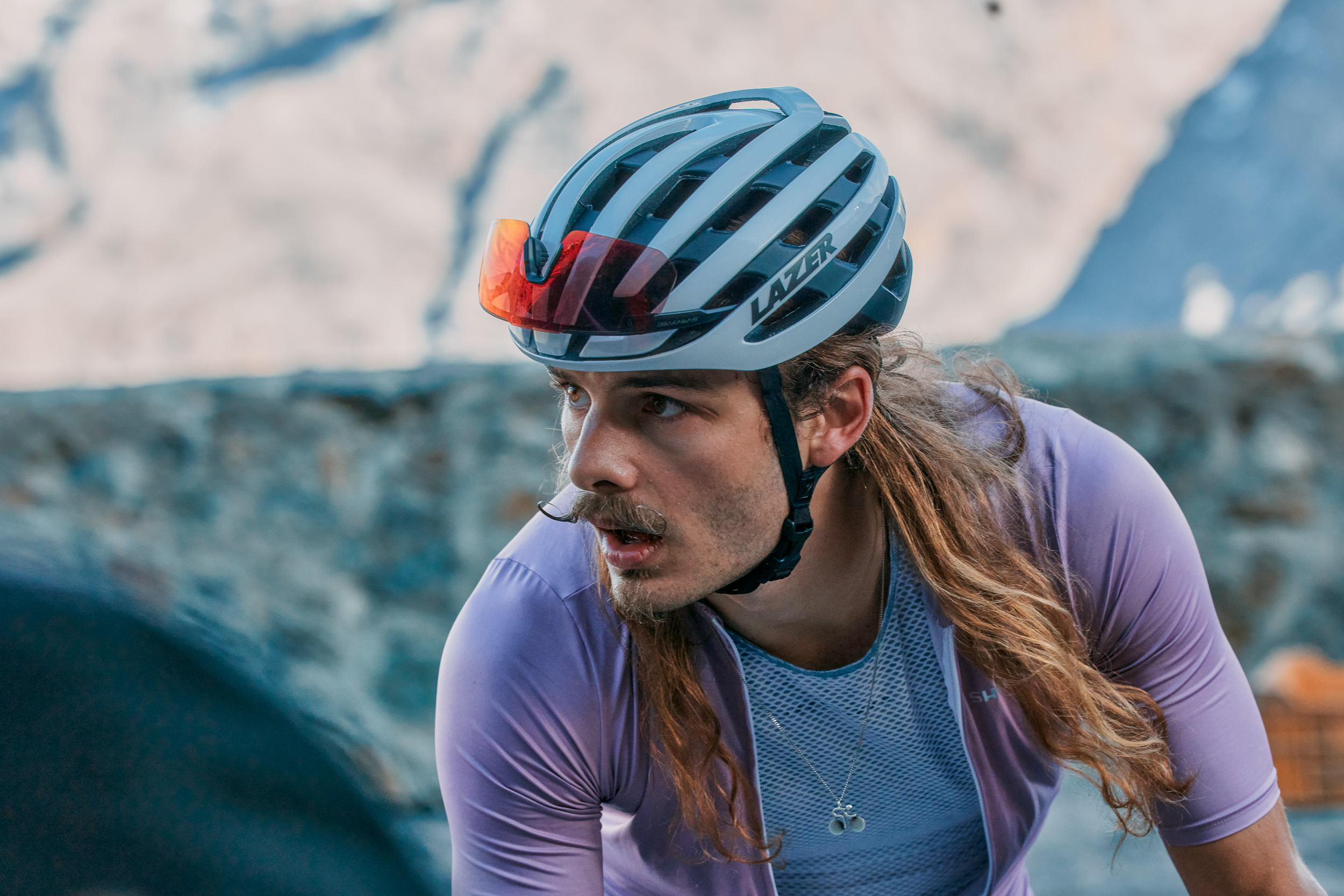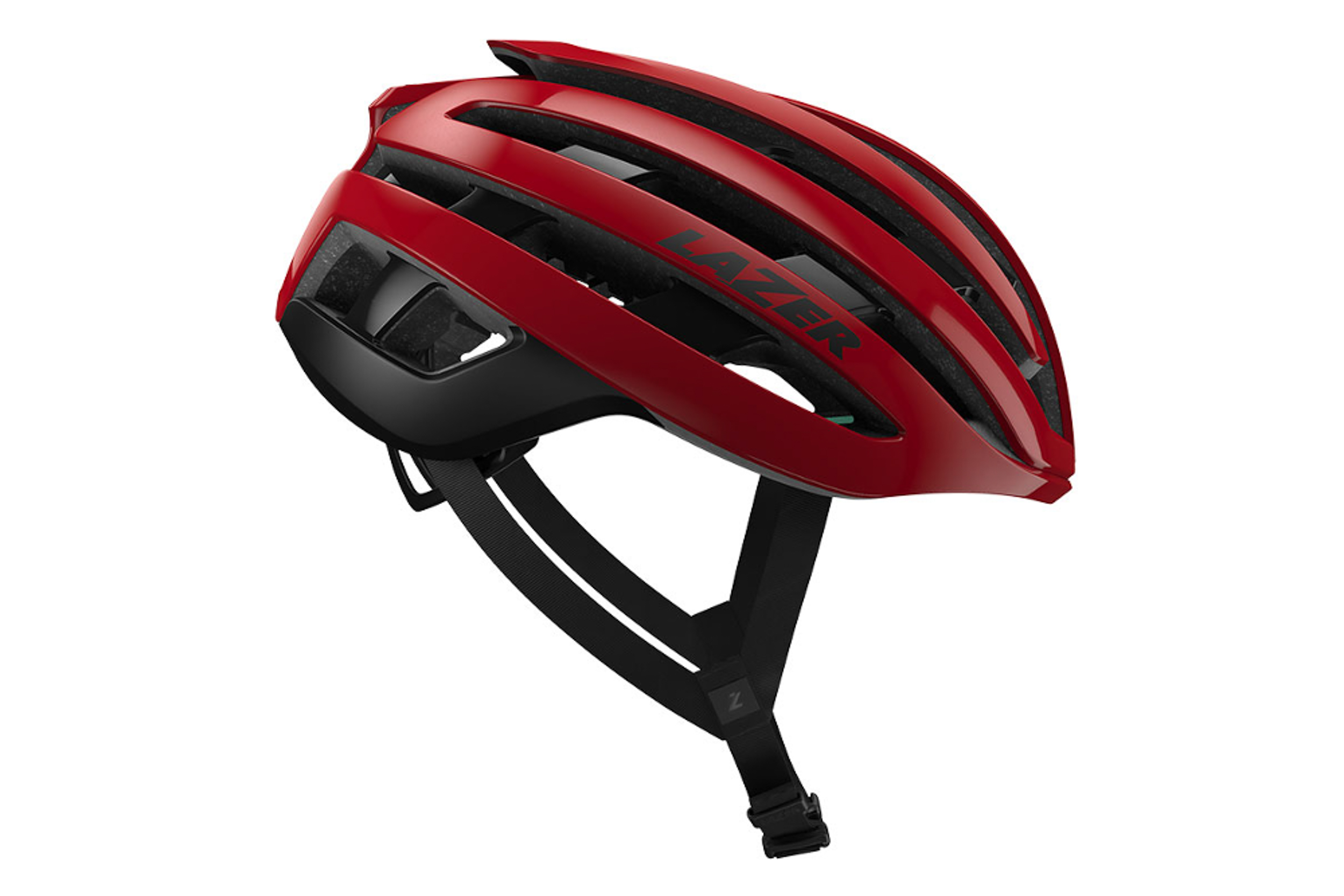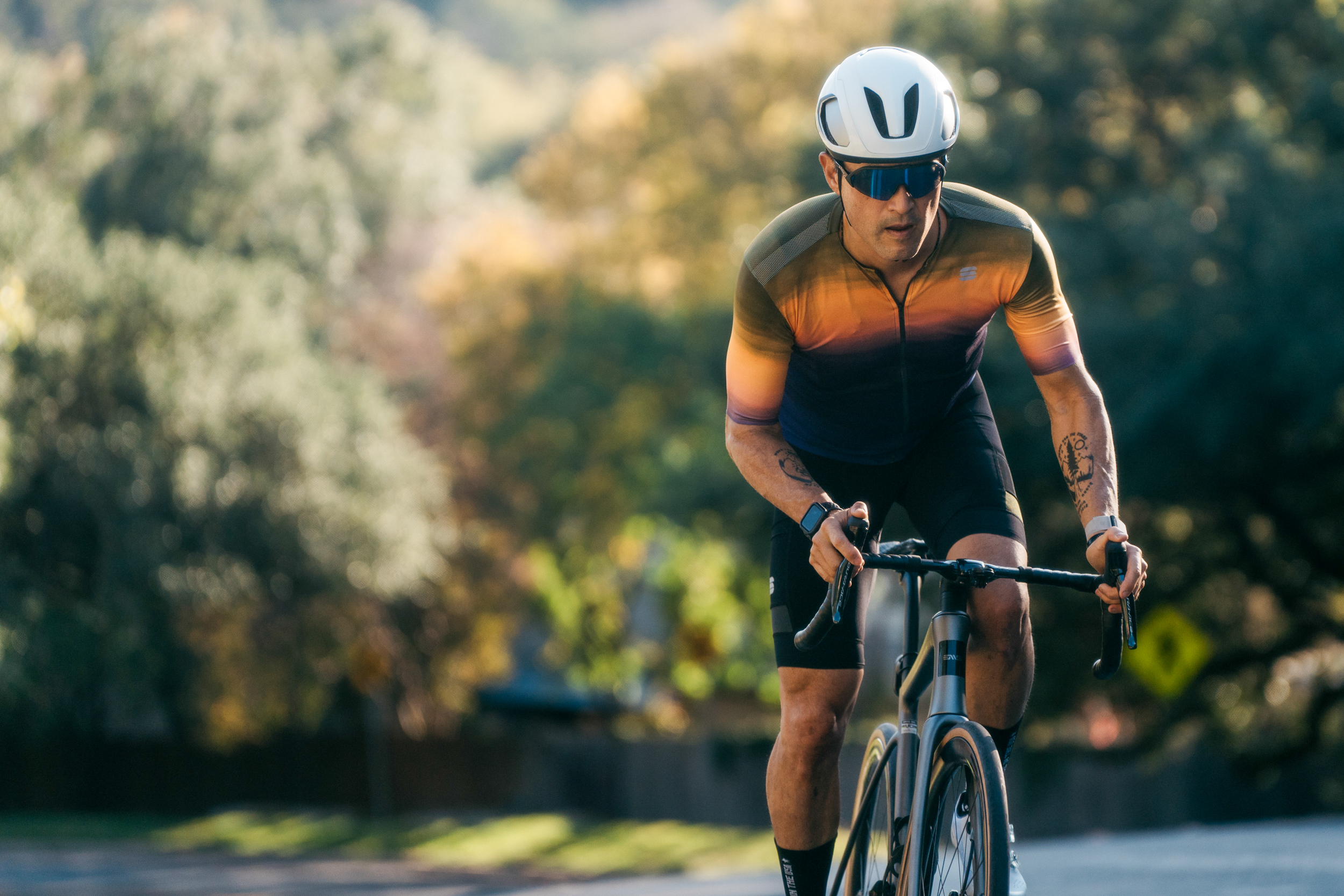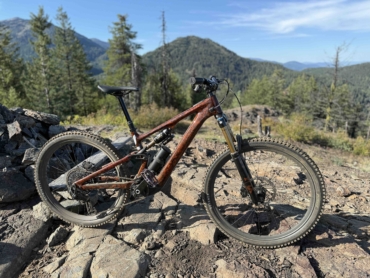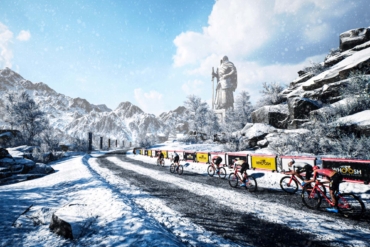But helmet brands persist in forging incremental gains, and the just-updated Lazer Z1 KinetiCore is another example. The Z1 has won World Tours and has been a regular in the pro peloton, but Lazer opted to improve a proven design.
I tested the Lazer Z1 KinetiCore over 2 weeks of road and gravel riding in central Texas in shoulder season and mild winter conditions. Over the six rides during this period, I paid attention to every sensation and detail of the updated Z1. I have high standards for bicycle helmets, and I won’t do a standalone review unless the model merits such. And I thought the Lazer Z1 KinetiCore wholly earned this First Look review.
In short: The Lazer Z1 KinetiCore was a standout all-around cycling helmet. It proved light and well-ventilated, and it fit my oval head well. The KinetiCore controlled crumple zones and 5-star Virginia Tech safety rating delivered confidence, and the feature set was impressive. Lastly, it was unanimously voted as one of the best-looking current helmets.
- Verified weight: 272 g, size L
- Rotational impact protection: Yes, KinetiCore
- Circumferential retention: Yes, Advanced RollSys
- Sunglass ports: Yes
- Sizes: S, M, L
- Colors: White, Matte Black, Cosmic Blue, Harbor Grey, Metallic Red, Flash Orange
Pros
- Extremely lightweight
- Well-ventilated
- Molded-in rotational impact protection
- Several color options
Cons
- May run large for some
KinetiCore: Standout Safety Feature on the Lazer Z1
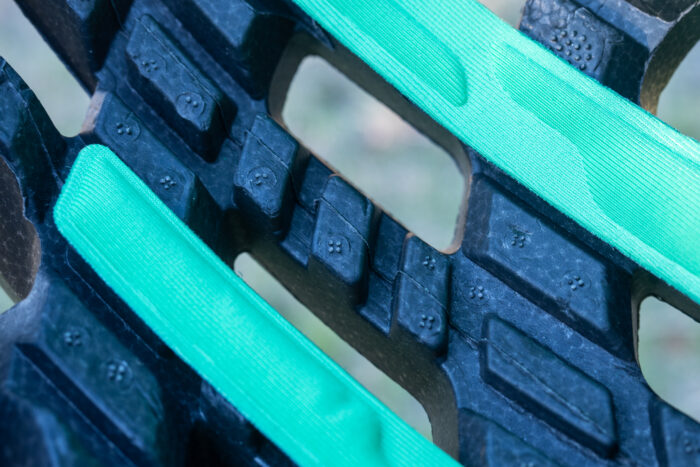
Lazer’s prominent feature is KinetiCore; this proprietary technology was 10 years in the making and yields rotational impact protection without an additional slip layer. Mips and other forms of addressing rotational impacts in bicycle helmets are often add-ons to a helmet that can exist as a standalone model without rotational impact protection.
Mips or other additional low-friction layers can slide independently of the rest of the helmet, helping mitigate angular impact forces. But they can look, feel, and seem like an afterthought.
Instead of seeming like an afterthought, KinetiCore uses foam blocks molded into the energy-absorbing EPS liner of the Z1 that are engineered as crumple zones. These blocks can deform and break, absorbing rotational forces that would otherwise be transmitted to the head.
This built-in protection doesn’t add weight, thickness, or the perception of an additional layer within the helmet. It also keeps the airflow pathway clean, unlike some slip liners that can restrict airflow.
This patented technology is a significant contributor to the Lazer KinetiCore Z1’s 5-Star Virginia Tech safety rating. This is the highest mark that can be bestowed by the highly regarded third-party, independent lab.
Per Virginia Tech: “Since 2011, Virginia Tech researchers have been providing unbiased helmet ratings that allow consumers to make informed decisions when purchasing helmets. The helmet ratings are the culmination of over 15 years of research on head impacts in sports and identify which helmets best reduce concussion risk. This work is done as part of Virginia Tech’s service mission and is 100% independent of any funding or influence from helmet manufacturers.”
Other Features of the Lazer Z1 Bicycle Helmet
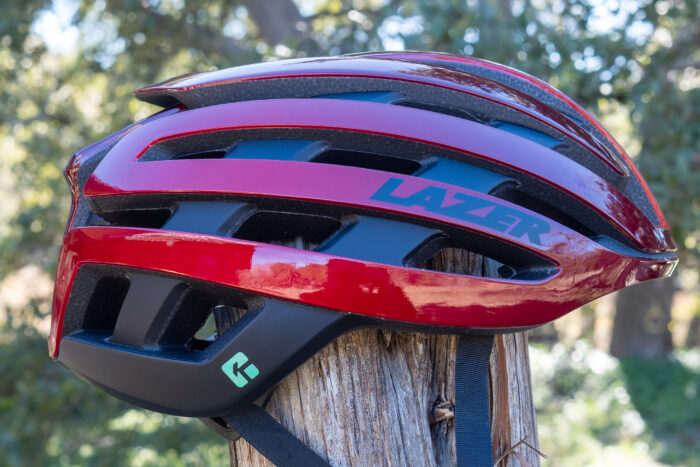
Weight
Another significant claim by Lazer is that the Z1 is “the lightest helmet including rotational impact protection on the market.” Indeed, the claimed weight of a medium-size Z1 is 220 g. My large-size sample weighs 272 g. For comparison, the last high-end road helmet I tested was the Specialized S-Works Prevail 3, which weighs 322 g in a large.
This lack of weight combined with a general shape that suits my oval head well were absolute joys, especially on rougher gravel rides. The lack of mass, associated momentum, and pressure points made the helmet virtually disappear on my head as the sensations of weight and movement were minimal.
Ventilation
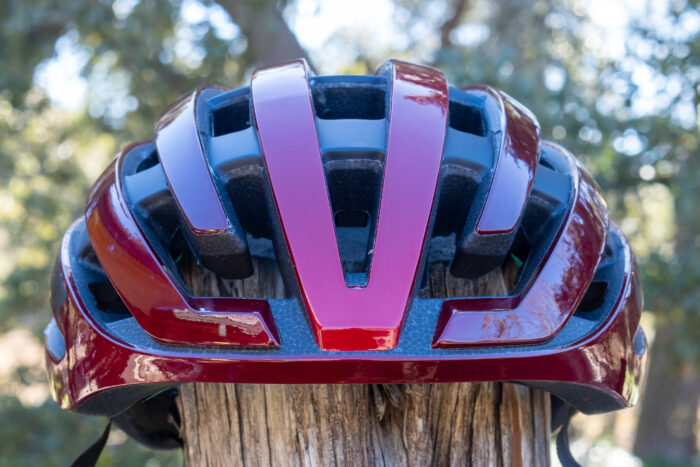
Venting is equally as important as weight to most of us in the summers. The Lazer KinetiCore’s vents, floating headband, inclined bridges within the EPS energy-absorbing liner, and lack of a potentially air-blocking slip liner helped the M1 feel as airy as the most ventilated helmets I’ve tested.
On the road at even moderate speeds, the abundant airflow from front to back of the helmet was easily perceptible. Although I didn’t test the helmet in our typically torrid summer conditions, I’m confident it will earn a spot as one of my most-used helmets when the temperatures soar over 90 degrees.
Remarkably, Lazer claims that wearing a Z1 offers 3% more ventilation cooling than not wearing a helmet.
For cyclists in more extreme winter environments, the new Z1 is compatible with a Lazer Aeroshell, which snaps on over the helmet, blocking the vents to retain warmth. It also improves aerodynamics for those in the “aero is everything” camp.
Other Features
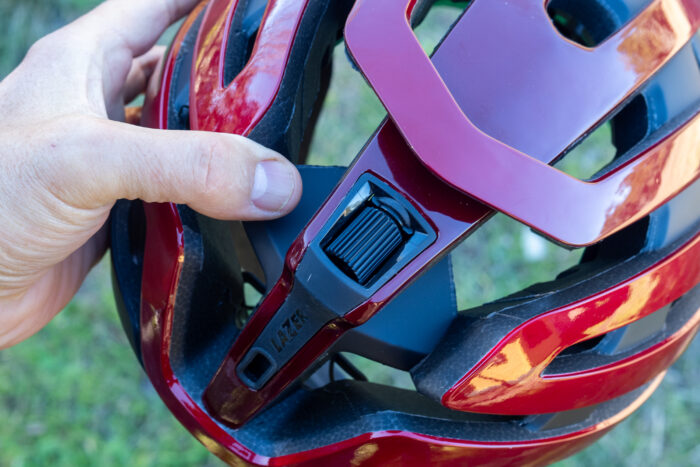
Another differentiating feature is the Lazer Advanced RollSys. It’s a thumbwheel mounted on the upward-facing aspect of the rear of the helmet that controls the tension on the circumferential fit system.
It was easy to find and use while riding, but I never had an issue with the more common BOA dial on a rear retention strap. But the higher mounting point of the Advanced RollSys keeps the rear retention strap area clearer for ponytails.
Another noticeable feature, or rather lack thereof, is the omission of buckles at the retention strap junctions. Lazer instead stitches the Y-junctures, eliminating the need for buckles. I appreciated that plastic buckles weren’t rubbing against my sensitive skin.
Finally, the Lazer Z1 has ports that securely held my cycling sunglasses when I was out too late. And it accepts a Universal Lazer LED tail light on the rear of the helmet to improve visibility.
Sustainability of the Lazer M1 KinetiCore
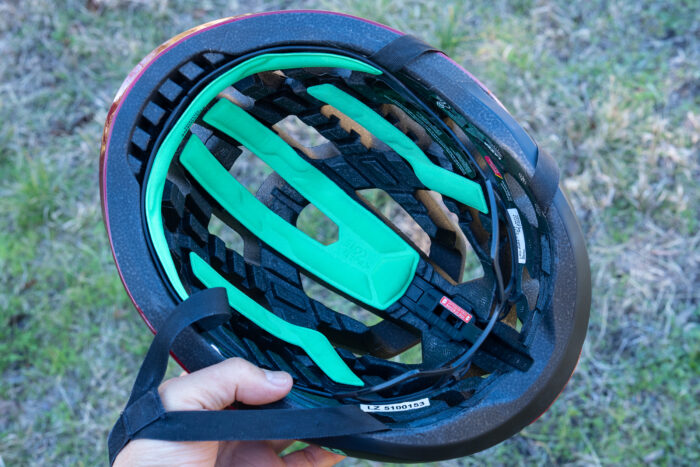
Lazer’s KinetiCore boasts another advantage over other methods of mitigating rotational forces. The lack of a slip liner, or any other additional layer outside of the EPS, keeps additional plastic or other synthetic material out of the landfill at the end of the helmet’s usable lifespan. The same applies to the lack of retention strap juncture buckles.
Lazer also uses recycled antimicrobial material for the retention straps on the M1 KinetiCore.
Fit Notes on the M1 KinetiCore
I’ve always fit into large cycling helmets, and the same goes for all the Lazer lids I’ve tested. But the Z1 fit differently. It still has a general shape that fit my oval-ish noggin well, just like other Lazers.
But I was on the small side for the large Z1. It still fit snugly and very comfortably, but I had to use the lowest horizontal setting of the RollSys cradle and turn the wheel nearly all the way in to get a snug enough fit. Some might not like the retention cradle that low on the head.
I reached out to Lazer staffers and they surmised that for the Z1, I’m straddling the medium and large sizes. If you’re on the smaller side of large, I suggest trying one on at a local retailer to ensure correct sizing.
Conclusions
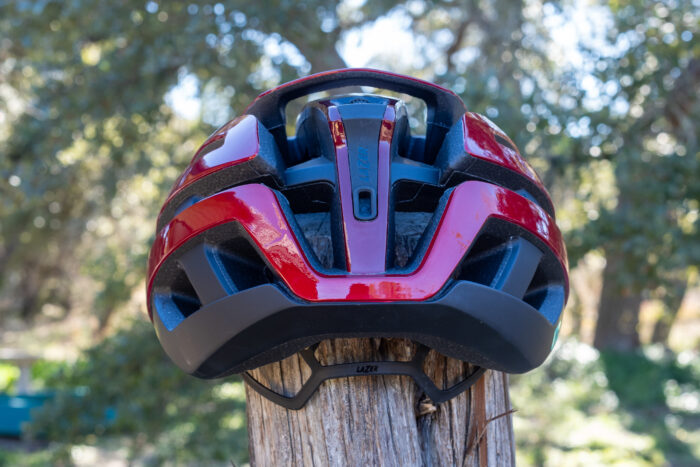
With today’s niche cycling product offerings, it’s hard to pin a generalist. But the Lazer Z1 KinetiCore proved to be just that for me. I am sure I’ll be grabbing this helmet often for road, gravel, and CX-style mountain biking. It was a combination of light weight, excellent ventilation, and good fit (outside of the RollSys note above) that made it an easy choice.
And everyone who saw the helmet in my short testing period commented on how good the Lazer Z1 KinetiCore looked. And I agreed. It doesn’t have the aero helmet look that I have grown to despise.
The Z1 also doesn’t have a weird, idiosyncratic visual cue that I’ve found in the last round of helmets I’ve tried. It just looks like a fast, modern, sleek helmet. And Lazer offers the Z1 in six different hues, from loud to subdued to cater to an array of tastes. I really liked the Metallic Red finish of my sample.
Lazer offers the M1 KinetiCore in small, medium, and large sizes. The MSRP is $280, putting the pricing well within the bounds of today’s upper-echelon road helmets.
